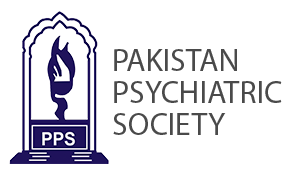POST TRAUMATIC STRESS DISORDER AND RELATED FACTORS FOLLOWING ORTHOPEDIC TRAUMAS
Abstract
Objective: The purpose of this study was to determine the prevalence of posttraumatic stress disorder
among patients visited following an orthopedic traumatic injury and to identify changes in vital signs and
demographic variables associated with the disorder.
Design: Descriptive study.
Place and duration of study: The study was done on one hundred patients admitted to outpatient
orthopedic clinic in Imam Reza Hospital (Mashhad, IRAN). The study was carried out during spring and
summer of 2006.
Subjects and Methods: Upon admission, demographic information, pain intensity according to patient’s
sense, pulse rate, blood pressure were assessed and General Health Questionnaire-28 was filled for the
patients. Then symptoms of PTSD were evaluated on the beginning and after one and three months
follow up based on DSM-IV criteria. The initial data from the patients developing PTSD after one and three
months were compared with those without the disease.
Results: After one month, 5 patients (8.3%) and after three months 6 patients (12.8%) had complete
PTSD criteria and 10 patients (16.7%) after one month and 6 patients (12.8%) after three months developed
subsyndromal PTSD. Presence of high pulse rate (P=0.000), high intensity of the tolerated pain (p=0.000),
more somatization symptoms (p=0.041) and more anxiety symptoms (p=0.039) predicted the development
of PTSD after one month and presence of high pulse rate (P=0.000), high intensity of the tolerated pain
(P=0.000), high maximum blood pressure (P=0.047), more somatization symptoms (P=0.019) and more
anxiety symptoms (P=0.024) predicted the development of PTSD after three months.
Conclusion: High Blood Pressure, pulse rate and pain as well as more anxiety and somatization symptoms
upon experience of trauma may increase rate of PTSD in sever orthopedic patients.
Key words: PTSD, Orthopedic Trauma, GHQ-28, Blood Pressure, Pulse Rate, Pain.
Downloads
Copyright © JPPS. Published by Pakistan Psychiatric Society
Licensing: This work is licensed under Creative Commons Attribution-NonCommercial 4.0 International License
Readers may “Share-copy and redistribute the material in any medium or format” and “Adapt-remix, transform, and build upon the material”. The readers must give appropriate credit to the source of the material and indicate if changes were made to the material. Readers may not use the material for commercial purposes. The readers may not apply legal terms or technological measures that legally restrict others from doing anything the license permits.






.png)









